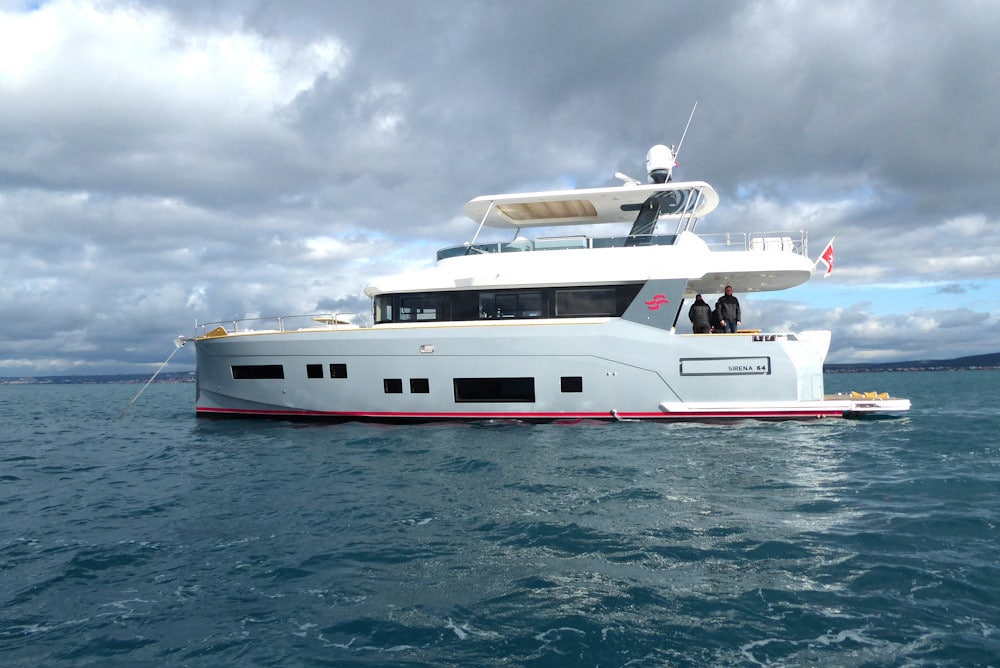Information on the order
Purchase appraisal for a motor yacht “Sirena 64” in Croatia.
Scope of order: Standard inspection including test drive, osmosis check, thermographic inspection of the machinery and inspection of the cathodic protection (hull potential).
Data
64
- Length: 20,74m
- Width: 5,90m
- Material: GRP
- 2x900Ps Volvo Penta

Thermography machine system
With an engine of 2 x 900 hp, the Sirena 64 is quite well equipped as a semi-displacement yacht, but the engines still have a lot to do to accelerate the 42 tons to a speed of just under 24 knots.
With the help of high-resolution infrared scans, we therefore also checked whether the thermal load on the engines and the exhaust system was within the tolerance limits during the wide-open throttle tests.
Oil analyses for yacht appraisals
In this context, we are often asked to what extent oil analyses make sense in the context of yacht appraisals.
I would therefore like to make the following comments on this topic: In principle, oil analyses are certainly justified as long as you have access to appropriate reference values in order to be able to correctly classify the findings in relation to the mileage and the given maintenance intervals.
However, if such reference values are not available, the interpretation of the analysis often remains somewhat vague, unless impurities are detected to a really significantly increased extent.
In this case, for example, the oil had only been changed immediately before the inspection, which is why the significance of an oil sample was of course questionable.
Instead, we had an authorized Volvo Penta technician on board during the Sea Trials, who monitored all the operating parameters of the machines using a diagnostic laptop, among other things.
Highlights SIRENA 64
As a yacht in this size segment, the Sirena 64 naturally comes with all kinds of technical gimmicks that make the owner’s heart beat faster.
However, two absolute highlights from a surveyor’s point of view were definitely the Seakeeper 16 Gyro stabilizer and the retractable anchor harness.
Although I’m not quite sure whether a traditional system isn’t a bit more practical and, above all, more reliable 😉
Seakeeper 16 Gyro stabilizer
Sirena 64 anchor system
Category A defects
10
Category B Defects
14
Category C Defects
age-appropriate
Defects categories
To assess the significance of the defects found and thus their repair priority, they are divided into the following categories:
Category A
Defects that acutely endanger or impair seaworthiness, functionality, navigational safety and/or the safety and health of persons on board and require immediate rectification.
Category B
Defects that do not pose an acute safety threat or merely restrict comfort on board and therefore have a lower priority for rectification.
However, it may be necessary to monitor developments.
Category C
Defects that do not pose a safety threat and are predominantly cosmetic and therefore do not have repair priority.
However, the value may be impaired.